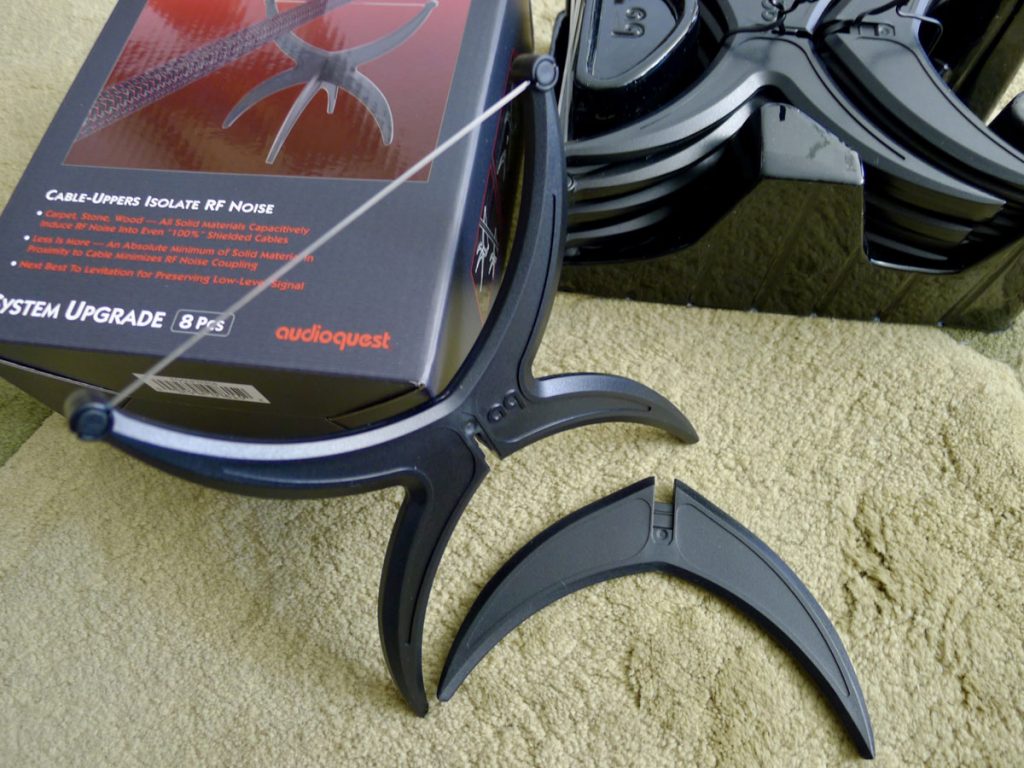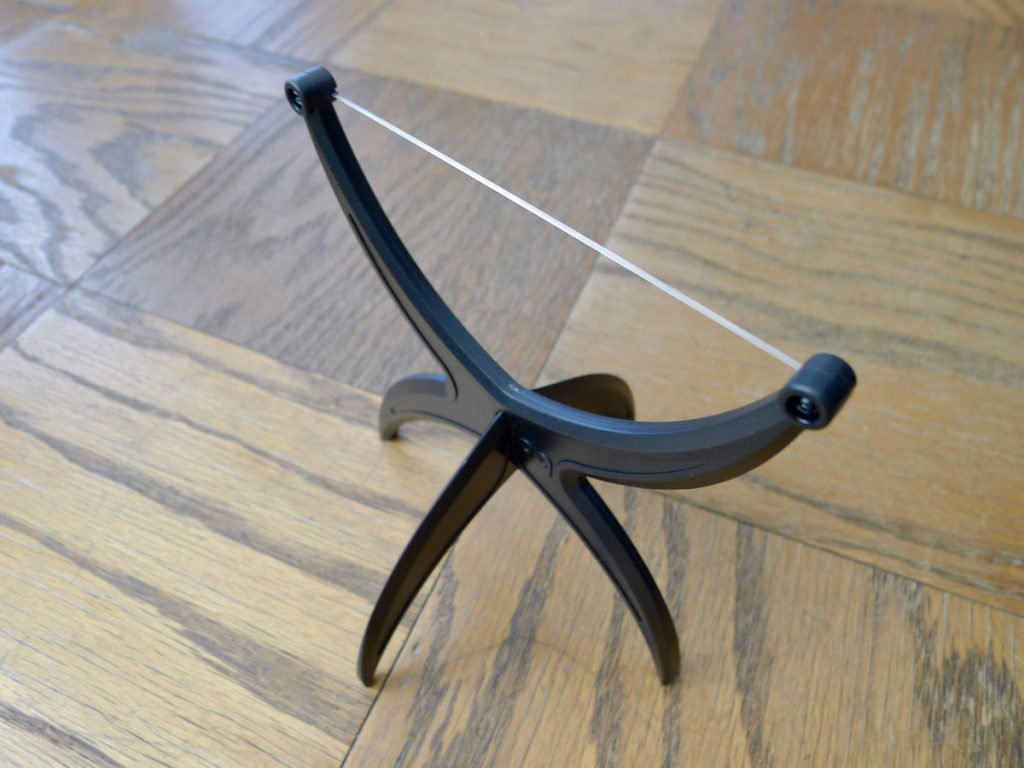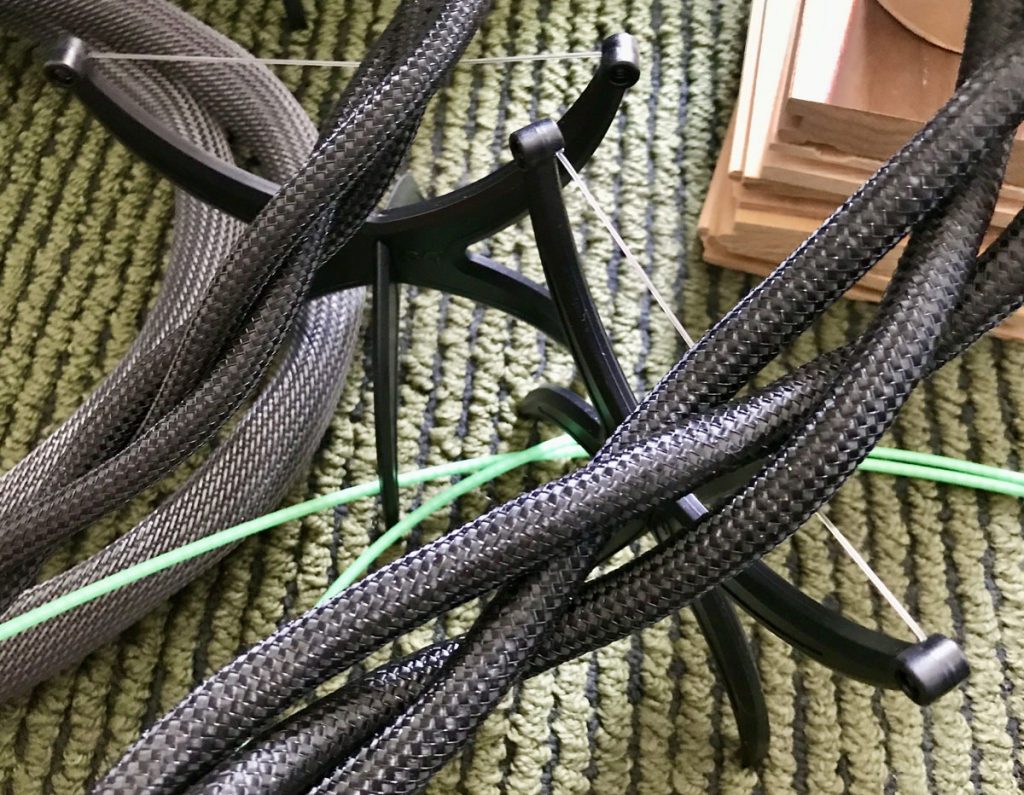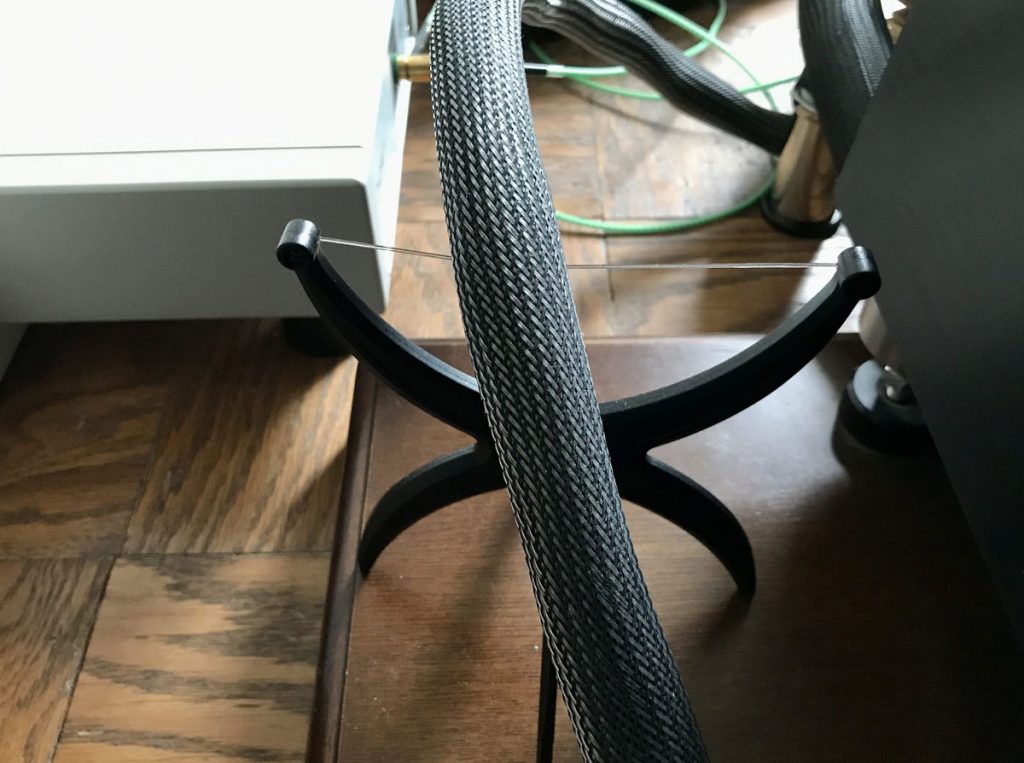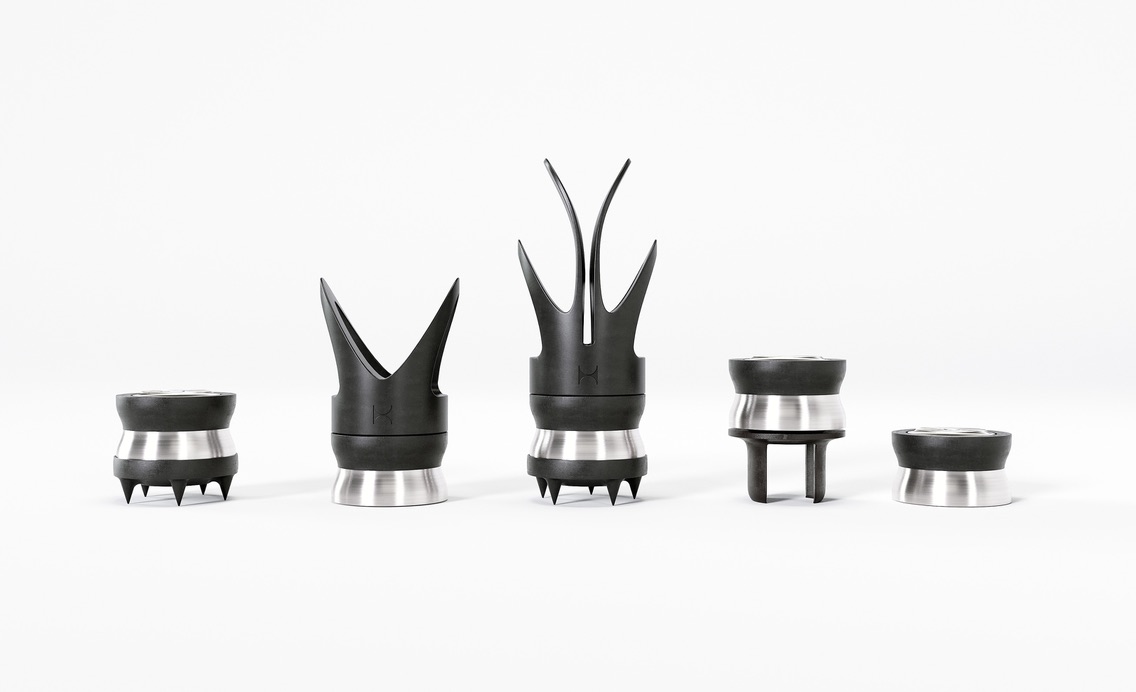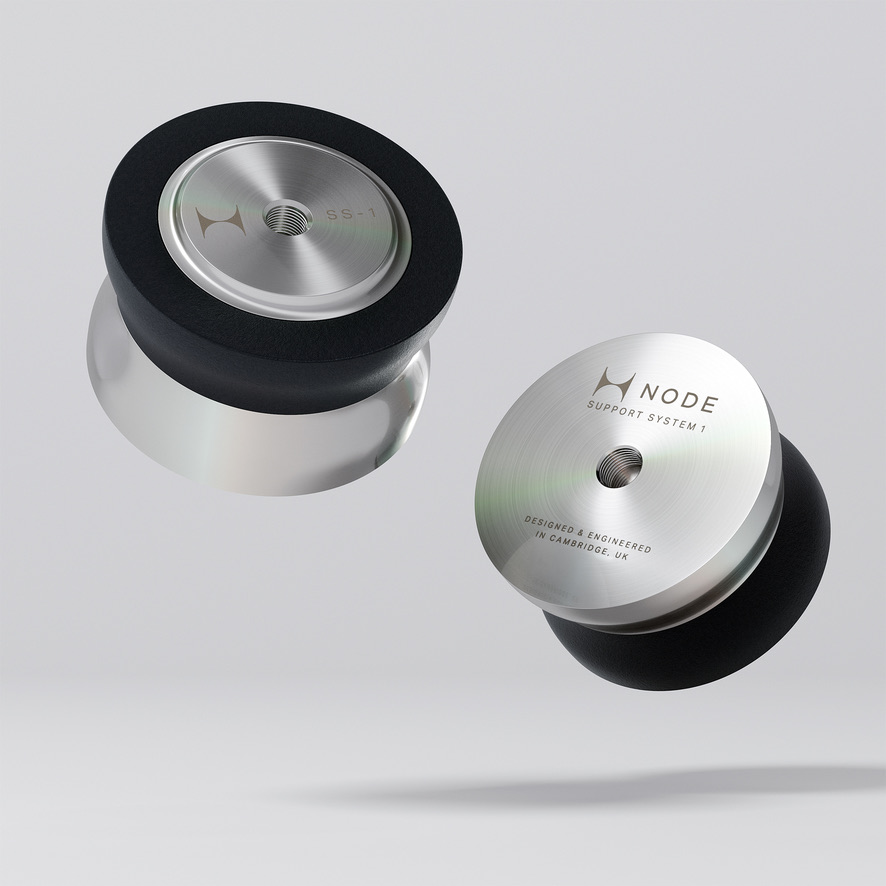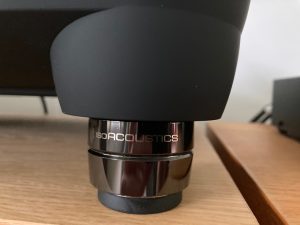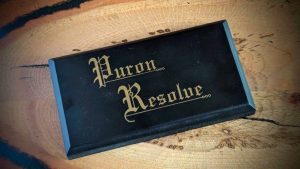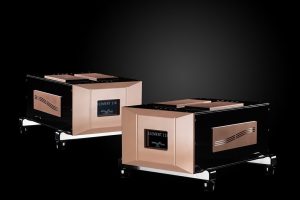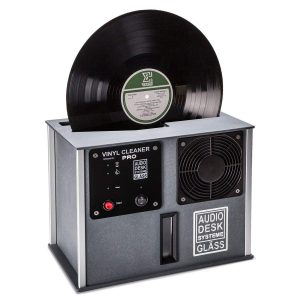If you believe in RFI—no, let me start over. If you believe in science (since RFI is a measurable phenomenon), most likely you are doing something to address RFI. We have all been advised to get those darn wires off the floor. A dozen companies will be happy to sell you specialized lifts at prices ranging from a couple bucks to several thousand per. It can be amusing—or irritating, and certainly confusing—to try and make sense of their divergent theories. That's no surprise, given that everything in this hobby is contentious. Ask two audiophiles what's the weather outside—what are the chances they'll agree?
Esoterica such as cable lifts are guaranteed to elicit askance glances, perhaps even a little sympathy, from your average electronics consumer. They have a point. The accessory market epitomizes the shared DNA between audiophiles and nerds, who are often joined at the chest by matching pocket protectors. Over the years, I've upgraded my pocket protector many times.
Even beginner audiophiles won't have any use for cable lifts. Only after you've achieved a sufficient degree of resolution will you hear what they can do. Then, as you continue on the road to clarity, these differences become increasingly meaningful. In the realms of the highest fidelity, where every little change in the soundroom is audible (such as moving a stack of records to a different location), cable lifts can have an impact close to swapping interconnects. Yeah, it gets ridiculous, but is this any different from other realms of connoisseurship?
That's why it's best to keep this conversation in the closet, between us. Speaking of closets, one entire shelf in mine is full of cable lifts. Most will never again see the light of day, so occasionally I do a purge, but a handful have become indispensable tools. Each does something different and I sprinkle them about like seasoning to add just the right finishing touch.
Isamu Noguchi with fishing line
I was intrigued when I spied the newly introduced Fog Lifter product from AudioQuest. Closer inspection, however, saw my enthusiasm waning. The product appeared to be nothing more than a piece of fishing line strung taut on a base of some black plasticky material. There was no visible high-tech element (at least nothing I could discern). It looked so… flimsy… What could it possibly do?
But I was jumping the gun. Cable lifts exist to address three problems: 1) manage cable routing and limit interactions, 2) reduce mechanical vibrations, and 3) limit RFI contamination. The Fog Lifter was prototyped with AQ power and speaker cables. Since AQ engineers believe their own cables suffer less from vibration than most, they focused on minimizing the effects from dielectric and flooring materials. After a lot of research into RFI behavior, they came to a startling conclusion (which may or may not be news to savvy insiders).
The very best RFI solution is levitation: lifting the cable with nothing touching it. Sort of like the vacuum dielectric used in some of the world's best cables. The thin wire of the Fog Lifter is the second best solution. You want an absolute minimum of solid material in proximity to the cable to minimize RF noise coupling. This is at odds with the massive stands or clamps of many designs that target the mechanical vibration issue. These designs do nothing about RFI—actually, they make it worse. Their mass attracts RF, so they become sources of RF noise themselves. When dealing with RFI, minimalism is key. Less is more.
Tone vs. Definition
Cable lifts fall into two broad categories. The massive stands tend to act like body builders, enhancing tone, density, and definition. The focusing lenses substantially ratchet up definition and boost transparency, but usually thin the sound to some degree. That's why the perfect cable lift is an impossible dream—it would be a combination of body builder and focusing lens rolled into one. Plus it would be height adjustable.
Design and Construction
Build quality counts, a cable lift needs to be steady on its feet and reliable. The Fog Lifter base is two pieces of plastic that snap together for a 5.6" W x 5.6" D footprint. That helps stability, however, it requires more floor space. AQ determined a minimum of six inches is needed to escape the range of floor-borne RFI. The Fog Lifter is 6.25" high. Most lifts are too short. A Fog Lifter can support a load of approximately 3 lbs. With an MSRP of $149.95 / 8 pieces, clearly, you're not paying for the cost of materials.
Mostly I use home-brew supports made from stiff cardboard shipping tubes cut down to size. Stacks of walnut and maple wood flooring samples also make good supports. (These are the so-called tone woods, which impart a splash of pleasant seasoning. Other wood varieties, such as mahogany, pine, or bamboo, don't sound as good.)
A couple under the AQ Dragon power cord
Test Scenarios
Let's begin with a Fog Lifter under each AQ Dragon power cable feeding my CH Precision M1.1 monoblocks. The PCs had been lying on the carpet unsupported. Now that they are practicing social distancing, the results were unsubtle. It was like a wind blew away the heavy atmospheric fog hovering over the soundstage.
Switching analogies, it was like putting a girdle around the midrange, constraining the bloat. This clarified everything. Image edges came into view and instruments broke out of their huddle in center stage, settling at varying depth levels. Transients sharpened to give dynamics more pop. The Fog Lifters clearly belong in the focusing lens camp that ratchet up definition, with an associated thinning and slight upward tilt in tonal balance.
Removing the Fog Lifters brought back diffuse and blurry conditions, what Lynn calls loggy, and the images plumped up again.
Do you like 'em Skinny or Fat?
So far, I had a total of four Fog Lifters in play, one under each power cord to my amps. (You don't have to lift the entire cable. Start with one and go from there.) After securing my pocket protector, I proceeded to introduce more. Each additional Fog Lifter tightened the girdle, squeezing the midrange a bit further and compounding the effect. Do this ad infinitum, you wind up with 100% transparency and a much leaner sound. Given the choice, my preference was to leave some of the bloat behind. While I like transparency, I also like zaftig images. It just seems more attractive and natural.
A couple under the Kubala•Sosna Elation! power cord
On two occasions a month apart, I hoisted a long Kubala•Sosna Elation! power cord that runs from the wall to a Nordost QBASE Power Distributor for my front-end with a couple of Fog Lifters. The cable had been lying on carpet and wood flooring.
Results were consistent with lifting the AQ Dragon power cables. The sound focused, a layer of texture and depth was exposed. The first time around I judged the focus too tight, so the Fog Lifters were removed. A month later, after some unrelated changes were implemented, I tried it again. This time the increased acuity was needed and didn't seem too tight. Instead, it brought excitement and sucked us in. The takeaway is the Fog Lifters are consistent in what they do. How you judge them will depend on where your system is at and what it needs.
The Sound of RFI
Let's take a moment to delve into the subject of RFI. In the minds of many audiophiles, RFI and audible noise are often commingled—one causes the other. Well, the two should be disentangled. The fact is you can't literally hear RFI, it lives at very high frequencies beyond human perception. If you make a change and perceive a drop in audible noise, most likely it's due to something else, perhaps increased shielding or vibration protection.
That doesn't mean RFI is innocuous—far from it. If it gets into a component, the signal will appear altered and accurate processing will be compromised, most likely manifesting as messed-up timing. For example, the lower-midrange might be delayed a millisecond, then linger around too long. Frequency coherency gets out of sync causing smearing and blurry conditions—in other words, fog. That is exactly what the Fog Lifters remediate.
Conclusion
Well, I never thought my July 4th holiday would see me cycling through cable lifts. Is this time well spent for a responsible adult? Shouldn't I be on the links engaged in a socially sanctioned recreation? (Heh, heh). But then again, given our current befuddlement with identity politics where everybody is lauded for their uniqueness, what's wrong with indulging a little OCD? Just let's keep it on the QT, please.
We've all got foggy conditions in the form of vagueness and smearing. Ambient RFI is a principle cause of low visibility compromising soundstage transparency. The AudioQuest Fog Lifters, a surprisingly effective, very affordable RFI remedy, act like focusing lenses and ratchet up definition. It's like affixing a girdle to the system's middle tire and containing the bloat. Not surprisingly, they work especially well with AudioQuest's own cables.
There's no question that the Fog Lifters impact your sound—all of the cable supports in my inventory do—but why these in particular are so powerful I'm at a loss to explain. Use them sparingly, because the effect compounds. You don't need to lift up the entire cable or every cable. A single Fog Lifter under each Dragon PC (for a total of four) moved my sound firmly in the direction of expressive and refined. The temptation to pile them on should be avoided… you don't want to remove all the fog. I'm gonna add a couple to my spice rack.
On the other hand, the Fog Lifters won't be much help if mechanical vibrations are your principle issue. Similarly, if you already have good transparency, they could be overkill.
Fog Lifters
Retail $149.95 for 8 pieces
AudioQuest




